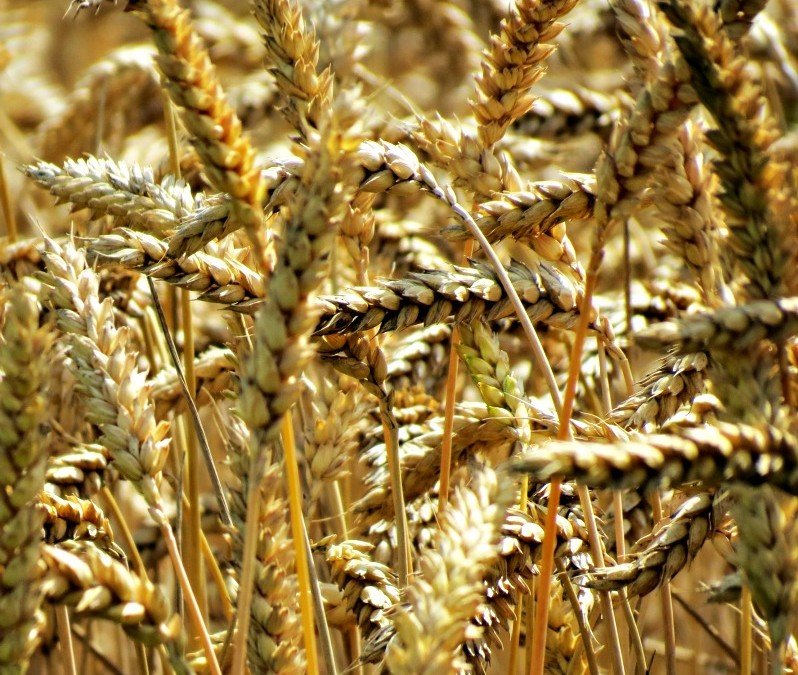When you feel you are ready to recover your natural, wild, free state, a good place to start is cleaning up your diet.
Just as you wouldn’t feed a horse steak, you wouldn’t give plastic food to a human.
Why is it these days, our stomach looks more like a landfill than like a vital organ?
Often the issue of food and diet seems complicated. There are too many black and white discussions and misinformation out there, so let’s keep it simple:
- Study what our ancestors ate, using the example of (modern) hunter-gatherer societies who lack the so-called “Western modern society diseases.”
- Trust what nature provides us: food without manipulation, artificial additives, or packaging, straight from the land to the mouth.
If you don’t know where to start, keep it simple by getting rid of the unnecessary. And believe me, there is a lot that you can/should skip: Start with all the industrial products and processed foods.
And, by the way, is there anything more manipulated, processed and artificial than milk, wheat, sugar and all their derivatives? Certainly, but these three are the most heavily consumed today. They are closely related to the rise of all kinds of pathologies (allergies, intolerances, diabetes, obesity, cancer …), and are the most embedded in Western gastronomy culture.
Only by eliminating these three ingredients of our diet we can improve our health by 180 degrees. Let’s start with them.
COW MILK AND DAIRY
Even mentioning this food, starts a controversy.
We grew up with the idea that milk, more specifically cow milk (the most consumed milk today) is good for our health. The truth is that we humans have fed on no other that the mother’s breast milk until the age of weaning for thousands of years until the arrival of farming some 10,000 years ago. Since then, milk has been consumed in massive quantities throughout our entire lives.
Given the steady increase in consumption, nature made an attempt to digest it some 5,000 years ago. There was a mutation in our DNA that enabled certain people to better absorb milk sugar or lactose. Most Europeans and many Americans have this mutation, but about 10% don’t have it and can’t tolerate milk. In Africa, the percentage of intolerance reaches 75% and in Asia almost 100%.
Milk is made of water, proteins (caseins), lipids (fats), carbohydrates, sugars (lactose), vitamins and minerals. What a rich and complete food, you might think. It contains everything. Yes, it does! But for cows’ calves, not for humans. The human digestive system is not made to digest cow’s milk, especially when it is processed and has exceeded a certain age.
Wow! How can that be?
This is how it works:
- In order to digest milk, enzyme action is needed: renin metabolizes casein and lactase for the assimilation of lactose. It turns out that both enzymes, thanks to pasteurization, homogenization and sterilization of milk, are destroyed due to high temperatures. The structure of the milk protein changes completely turning it into a product that is harmful to your health. The more processed the milk is, the more toxic it becomes.
- On the other hand, starting at the age of three years old, the body makes less and less renin, and stops producing it completely at about 6 years old. The same goes for lactase in most cases. These enzymes are present in human infants to digest breast milk. If after that age they aren’t produced anymore, there must be a reason. Nature is wise and perfect. Maybe we should rely on it a little more.
If you are one of those who are genetically more adapted to the consumption of dairy products, you are less likely to have trouble tolerating them. But even then, I would still recommend that you consume the less processed products and drink fresh organic milk, cheese made with raw milk, or homemade yogurt which is very easy to make. In this case, the milk may be acceptable, but you must learn to know your own body. Listen to it and trust your instincts (and the physical effects you feel eating certain foods).
In addition, strong bones require not only calcium (which can be found in many other sources than dairy products such as green leafy vegetables, cruciferous vegetables, sesame seeds or almonds, for example), as well as other factors like the sun for Vitamin D, vitamin K2 for bone restoration, magnesium to metabolize vitamin D and exercise to increase bone density.
WHEAT
As it is the case with milk, the human race lived for millions of years without consuming grains. The introduction of agriculture led to the widespread consumption of grains, and allowed many people to be fed at a very low cost.
Wheat is a grass plant from which precious cereal grains are obtained. In order to make it more weather resistant, wheat has suffered fierce processing and hybridization for purely economic purposes to achieve a massive increase in yield per hectare.
As a result, the modern wheat has become such an extremely weakened plant that is incapable of surviving in the wild. It needs human intervention to be able to grow. Their roots do not grow well, and are so short, they cannot absorb enough minerals in the soil. The modern wheat is low in nutrient content. The same goes for most domesticated plants and animals subjected to intensive farming.
It is therefore more than disturbing that our Western diet is based on an allergy-provoking and nutrient-poor cereal, while we ignore healthy, real foods.
What’s wrong with it?
1. The extreme manipulation of the wheat plant has changed it into a strange food to our bodies, which don’t recognize it as real food, and it is therefore rejected (intolerance).
2. Besides the low level of nutrients, wheat contains anti-nutrients, i.e. substances that the plant produces to defend against external aggression and survive. To us, they cause serious problems in the digestive system, and hinder or prevent the absorption of important nutrients.
In the case of wheat the main are:
– Gluten (or glue in Latin) is a protein that damages the lining of the small intestine. A damaged intestine is equal to poor absorption of nutrients.
– Phytic acid: hinders the absorption of certain minerals like iron, calcium, magnesium and zinc.
– Lectin and saponins: damage the intestinal barrier what decreases its permeability
3. Wheat products (bread, pasta, pastries, pizza, etc.) contain exorphins or exogenous morphines that might be addictive. That might be the reason why it is the hardest thing to eliminate from our diets.
4. It is a sugar (complex carbohydrate) that needs to be converted into glucose to be processed and used as energy for functioning of the body. But we already eat too much sugar!
And too much sugar means:
– increased levels of blood glucose (high levels of glucose become toxic).
– Excess glucose is stored as fat.
SUGAR
Sweet is a natural taste found in fruit and honey. Our ancestors consumed it occasionally, as fruit consumption was based on availability and seasons.
Today the situation is quite different. Fruits from five continents are available in almost any season. Refined sugar consumption has gone from occasional in the 19th Century to massive presence in almost all industrial (food?) products. Our sense of taste is completely corrupted, and our health is far more than compromised.
Refined sugar needs little digestion. It breaks down quickly into fructose and glucose to be absorbed by the intestine. It then goes into the blood causing blood sugar to increase rapidly. Insulin works as a key that helps the cells to open and absorb this glucose to produce energy. If you do not need the energy, it is stored as reserve sugar (glycogen) in the liver and muscles. The storage capacity at these sites is rather limited, and when they are full, glycogen is converted to triglycerides (fats).
What’s wrong with sugar?
- It is not a natural product. Through the refining process all the nutritional elements disappear and it becomes an isolated product without any nutritional value.
- It demineralizes the body. As it lacks all the natural substances that help metabolize the sugar, the body has to dig into the reserves of nutrients in the body to regain its balance. For example, calcium is taken out of the bones to neutralize the acid generated in metabolizing sugar, what leads to bone loss, triggering osteoporosis.
- It causes addiction. The need to consume sugar can be as compelling as smoking, drinking or consuming cocaine. By the reactions it causes in the consumers, sugar is considered an addictive substance.
- It promotes the proliferation of yeast (such as Candida albicans), fungi, bacteria and parasites, as they feed on sugar.
- The hypoglycemic vicious circle leads us constantly from excitement to physical and mental fatigue, irritability and depression. Maintaining the level of blood sugar (glucose) after meals is vital. When we eat white sugar, the small intestine absorbs it rapidly to raise the level of blood sugar (hyperglycemia). We feel euphoric and cheerful, but not for long. As the sugar level decreases again by insulin action (hypoglycemia), we feel tired, depressed and irritable. That’s when we decide to cheer up eating a good chunk of chocolate, and we’re back in the vicious sugar cycle again. This process repeats itself for days and years until the pancreas gets fed up and diabetes knocks on our door.
From our own experience, we found that removing these three foods (we still have them occasionally) could not be more positive.
Check it out yourself! Go slowly, listen meticulously to your body, and analyze what suits you and what does not – what gives you energy and what robs energy from you.
But above all, never forget that nature is your first supplier, or better, your exclusive supplier of healthy and natural food.
Let us know your experiences. They can be very useful for everyone, so feel free to comment and share.
A hug,








Recente commentaren